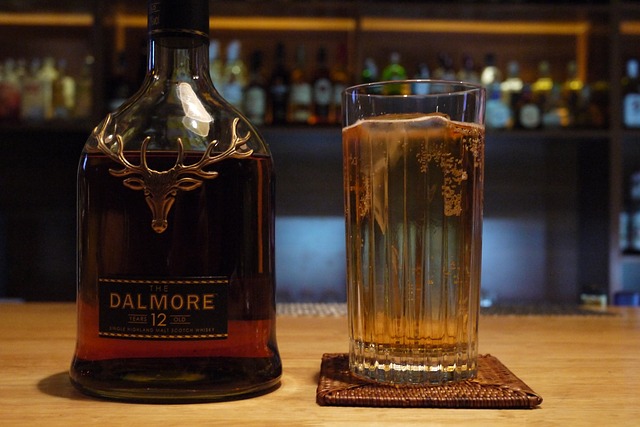Since the days before the Revolutionary War, whiskey has been important to American culture. It was even the focus of the American government’s first major crisis during the Whiskey Rebellion. American whiskeys started out similar to what could be found in Ireland and Scotland but quickly evolved. Today America can claim several different types of their own whiskeys with their own special taste and aromas. Every American whiskey is now closely regulated to make sure they’re a quality drink that conforms to the standards for its type. Those regulations also make it easier for customers to tell the difference between the different types of whiskey.
Bourbon Whiskey
A truly unique type of whiskey, bourbon can only be produced in the United States with a minimum of 51% corn. Regulations ensure that no bourbon is distilled with less than an 80% alcohol content (160 proof) and is aged for at least two years in a charred barrel before being bottled. On average though distilleries will age their bourbons and other straight whiskies for at least four years before bottling. That long aging process in charred oak barrels gives bourbon a mix of flavors that includes vanilla and dried fruits but also firm oak infused body.
Tennessee Whiskey
Produced exclusively in Tennessee this whiskey is a close cousin of bourbon that also must be made with a minimum of 51% corn. Also similar to bourbon Tennessee whiskey must be distilled at 80% (160 proof) alcohol content and then aged. The differences between the two are that Tennessee whiskey must be filtered through beds of sugar maple charcoal before being aged in freshly charred barrels for a minimum of two years. The best way to tell the difference between bourbon and Tennessee whiskey is taste, Tennessee whiskey has a long smooth finish that sets it apart.
Rye Whiskey
This is a much less common type of American whiskey compared to bourbon or Tennessee whiskey’s. As its name suggests this type of whiskey is made with 51% rye grain instead of corn. It still conforms to the usual American regulations in every other way however. Distilled at no less than 80% (160 proof) alcohol content before it’s aged for at least two years in a newly charred barrel. Rye whiskey is rarely seen because its most often mixed into other whiskies to enhance their body and flavor. Only a small portion is bottled and sold to customers.
Blended Whiskey
Created by mixing a straight whiskey with other whiskies or neutral spirits, blended whiskies have some of the strictest regulations of any American whiskey. In order to be a blended whiskey it must contain a straight whiskey or a blend of several straight whiskies of no less than 20% per proof gallon. If they are labeled as a specific grain type, such as malt or wheat, then it must be made up of at least 51% of a straight whiskey of that type. The other percentage can be made of any un-aged grains, neutral spirits, and flavorings.
Moonshine Whiskey
Usually made and transported illegally by smugglers, moonshine whiskey has been a part of American drinking history from the beginning. It’s often produced in home-made distilleries using corn mash as the main ingredient to create a clear high-proof whiskey. It was an important source of income for many farmers in the Appalachian Mountains through the 1800’s. Moonshine is considered to be an extremely dangerous form of whiskey to drink because stills it’s made in are made up of automotive parts. That allows antifreeze, lead, glycol, and other lethal chemicals to get into the whiskey.
There are other forms of American whiskey that uses different ingredients but often contain the same base of either corn or rye. These however don’t differ that much from bourbon, Tennessee, or any of the other American whiskey types we have listed here. They are still unique to America though because of those ingredients as well as the way their made which is different from every other method in the world. Those unique ingredients and methods are what give them the special taste and body that makes American’s proud to drink brands like Jack Daniels.

